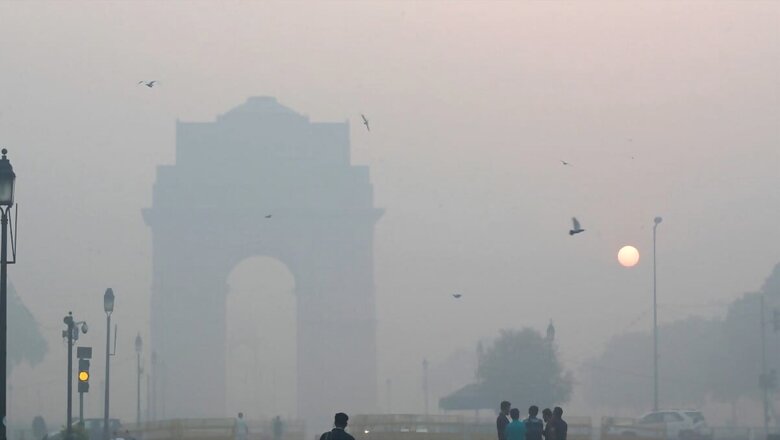
views
With the beginning of the festive season, the air quality of Delhi deteriorated to “very poor” on Monday due to unfavorable meteorological conditions, according to monitoring agencies. The national capital’s 24-hour average air quality index (AQI) stood at 309 on Monday morning, slightly better from the day before.
Almost all areas in Delhi recorded air quality in the ‘very poor’ category in the morning today, with the lowest being the Wazirpur area, where the AQI stood at 436 making the air ‘hazardous’ to breathe.
According to the Central Pollution Control Board (CPCB), areas in the national capital region also recorded ‘very poor’ air quality, with Faridabad recording an AQI of 346, Gurugram 26f8, and Noida 312.
Delhi Govt Meeting Today
Addressing the issue of high pollution in Delhi, Environment Minister Gopal Rai on Monday said, “the cold has started increasing in Delhi and speed of the wind has decreased, this may result in an increase in pollution… The particulate matter is staying near the ground.”
The Minister informed that the second phase of Graded Response Action Plan (GRAP) has been implemented in Delhi and a meeting has been called with all the concerned departments to discuss the execution of the GRAP phase 2.
“The weather is not in our hands but the sources need to be controlled… GRAP 2 is mainly about cleaning and water sprinkling etc… Frequency of buses and trains would be increased… A meeting has been called at 12 pm (today)… We have spoken to the environment ministers of the surrounding states and they have assured that they will take action on stubble burning… Due to Diwali, stubble and Dussehra, the next 10 to 15 days are very crucial for Delhi,” he added.
AQI lowest since May
On Sunday, Delhi’s AQI dipped to 313 for the first time this season after May 17. Delhi last recorded “very poor” air quality on May 17 when the AQI was 336.
AQI to remain ‘very poor’ for a few days
According to officials from the India Meteorological Department (IMD), the air quality in Delhi-NCR will remain “very poor” for the next few days due to a drop in temperature and the influx of emissions from stubble burning.
The wind speed is slow, and there has been scant rainfall in October, unlike the last two years, an official said.
The central government’s Decision Support System for Air Quality Management predicts that paddy straw burning may increase from Monday.
According to the system, smoke from paddy straw burning accounted for 16 per cent of Delhi’s PM2.5 pollution on Sunday, and this could increase to 30-32 per cent on Monday.
According to the Union environment ministry, the maximum share of farm fires in Delhi’s PM2.5 pollution stood at 34 per cent on November 3 last year and 48 per cent on November 7 in 2021.


















Comments
0 comment